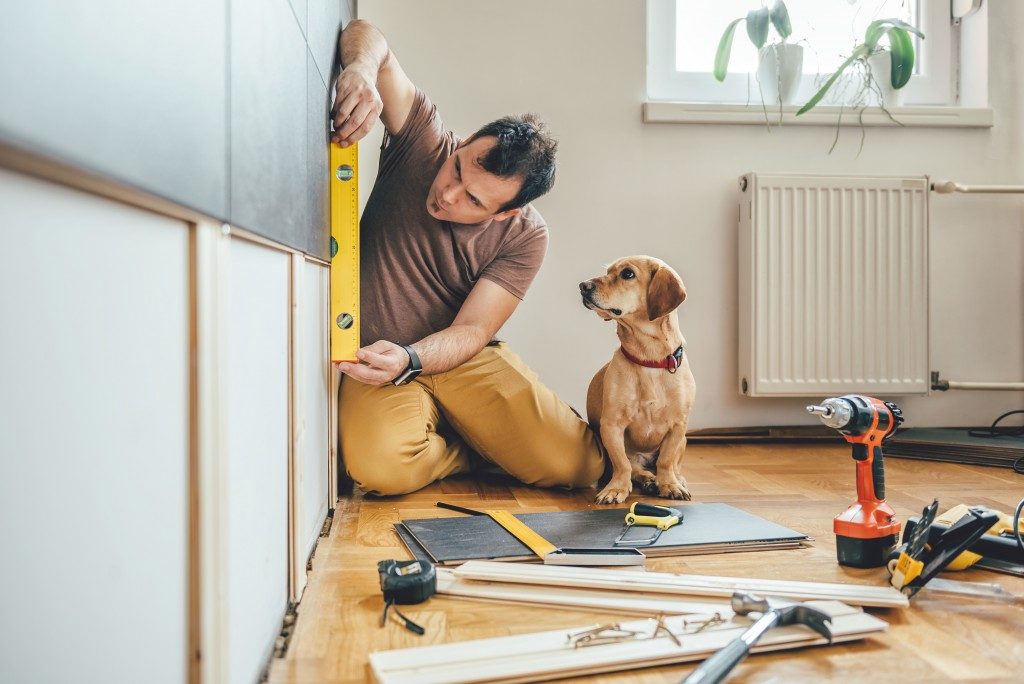The DIY Appeal
Doing DIY projects such as home improvements and repair isn’t only cheaper than when hiring a professional to do it for you; it can be an enjoyable and skill-building activity. And no question finishing a DIY project is something that you can be proud of and can be quite good for your self-esteem and mental health. However, if you’re still a beginner, or it’s your first time taking on certain DIY projects (such as repairing or replacing drywall, or making your backyard deck), it can be quite risky.
DIY-Related Injuries
DIY-related accidents have cost the UK’s National Health Service (NHS) around £222 million in hospital visits annually; the most common culprits of these DIY-related accidents are contact with power tools, falling from a ladder, contact with general (non-power) tools, and electrocution. Not only can these injuries be painful, but they can also be potentially debilitating or even fatal. As such, we’ll take a look at safety tips to ensure that you avoid getting injured when doing your DIY projects:
Know Your Limits
You have to accept the fact that there are tasks that are beyond your current skills, abilities, and resources that are better off done by a professional. For example, if you’re relatively experienced with DIY woodworking projects such as making chairs or repairing cabinets, jumping into fixing your home’s electrical connections or doing DIY repairs to your home’s roofing when you have no experience or training can be risky. You should also take into account your physical limitations, as some DIY tasks may require a lot of force (if you don’t have specific or special tools for the job). Also, always make sure to read the manual and be well-acquainted with how your tools work and do your research when doing these projects.
Keep the Work Area Clean
Avoid tripping, slipping, and falling into sharp debris by always ensuring that your work area is clean. So make sure that no clutter and power cords are lying all over the place that you can trip over, and make sure to immediately clean up and dry any spilt liquids as they can cause slipping, chemical burns, damage from fumes, and even electrocution. Lastly, ensure that you always properly store all your tools when you take your break and when you’re done with the project as children and other people can also be injured by these.
Invest in Good Tools and Keep Them Well-Maintained

Don’t skimp out on your tools; cheap and poor quality tools can end up breaking, snapping, splintering, and cause all manners of damage to your work and could even injure you. You also need to keep your tools well-maintained as dull tools would force you to exert an extra force that can eventually break the tool or cause your grip to sleep, subsequently injuring you. So, if you’re doing a DIY drywall repair or installation, ensure that you invest in a good quality plasterboard cutting tool and keep it sharp and rust-free.
Protective Equipment and Proper Clothing
Lastly, it’s important that you gear up for the job. Invest in high-quality personal protective equipment such as goggles, gloves, boots, and masks. Be wary of the possible hazards of the project and dress and gear up accordingly. Loose-fitting clothing and jewellery can be caught up in tools, and exposed skin can be at risk of punctures and cuts. If you’re working with chemicals, dust, or potential projectiles, it’s best to have a mouth mask and goggles to protect your eyes and respiratory system.
Conclusion
DIY projects can indeed be enjoyable, economical, and could even beneficial to our mental, physical, and psychological health. However, as with all things, it’s always important to prioritise safety; so make sure to remember these safety tips to avoid sustaining injuries or worse while doing your DIY project.

